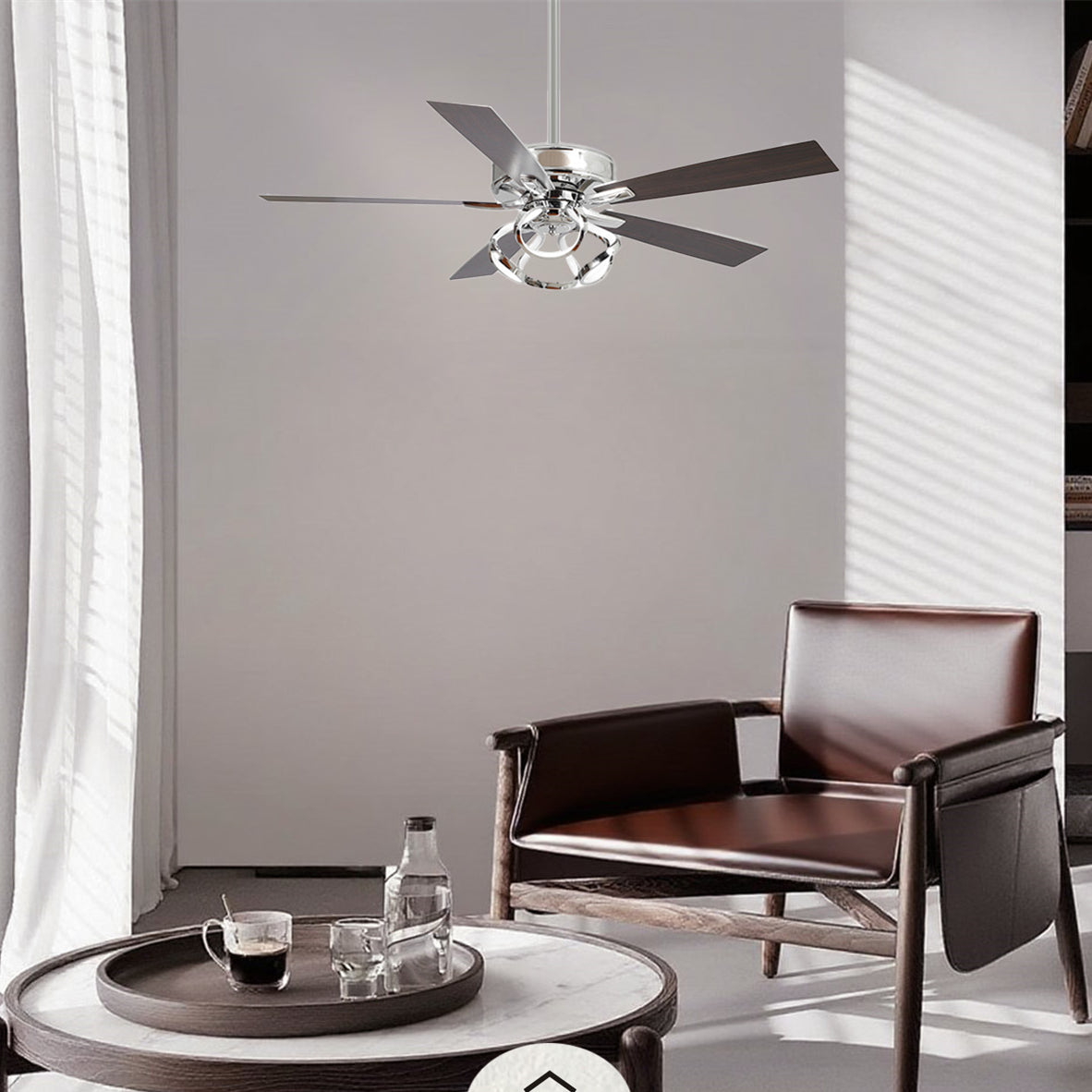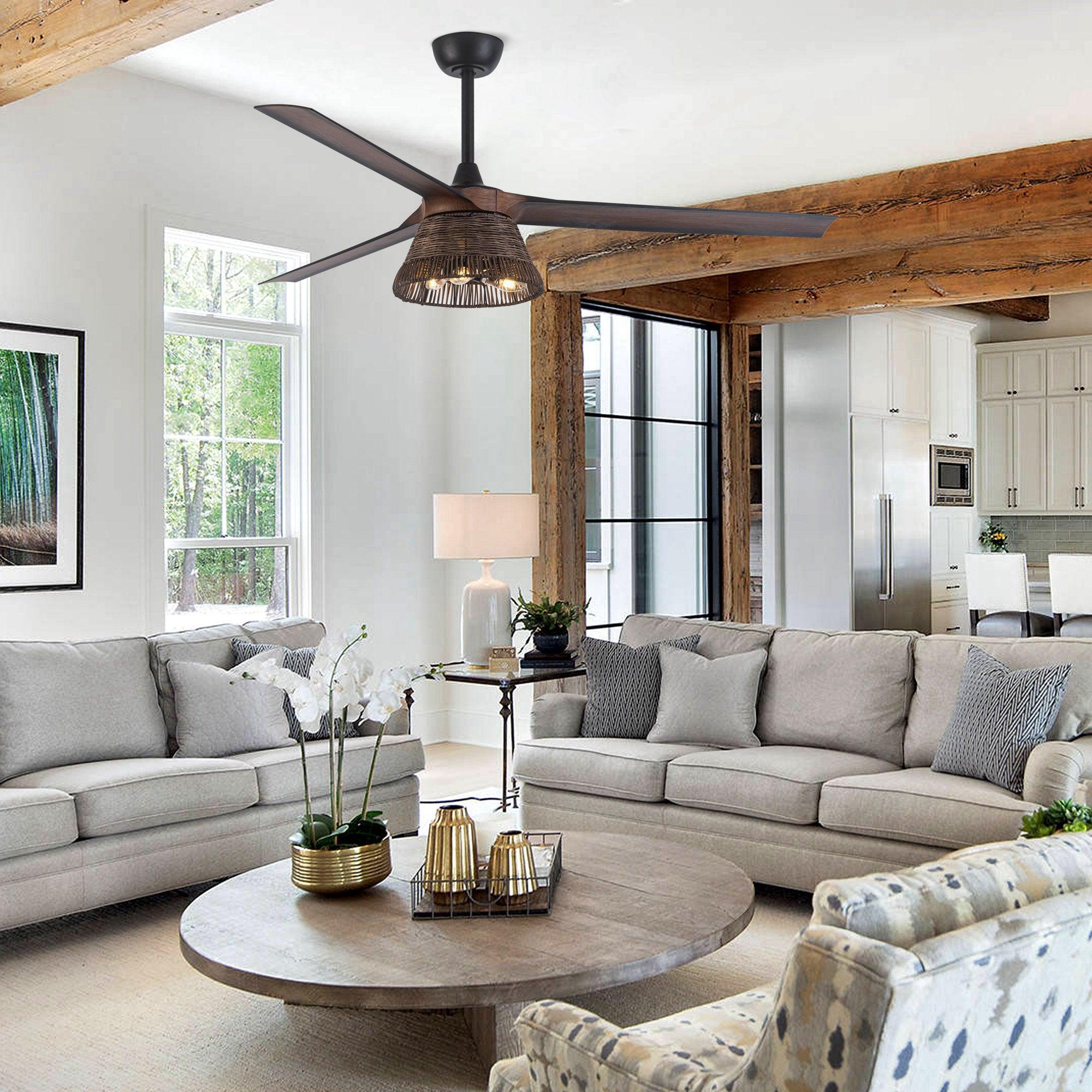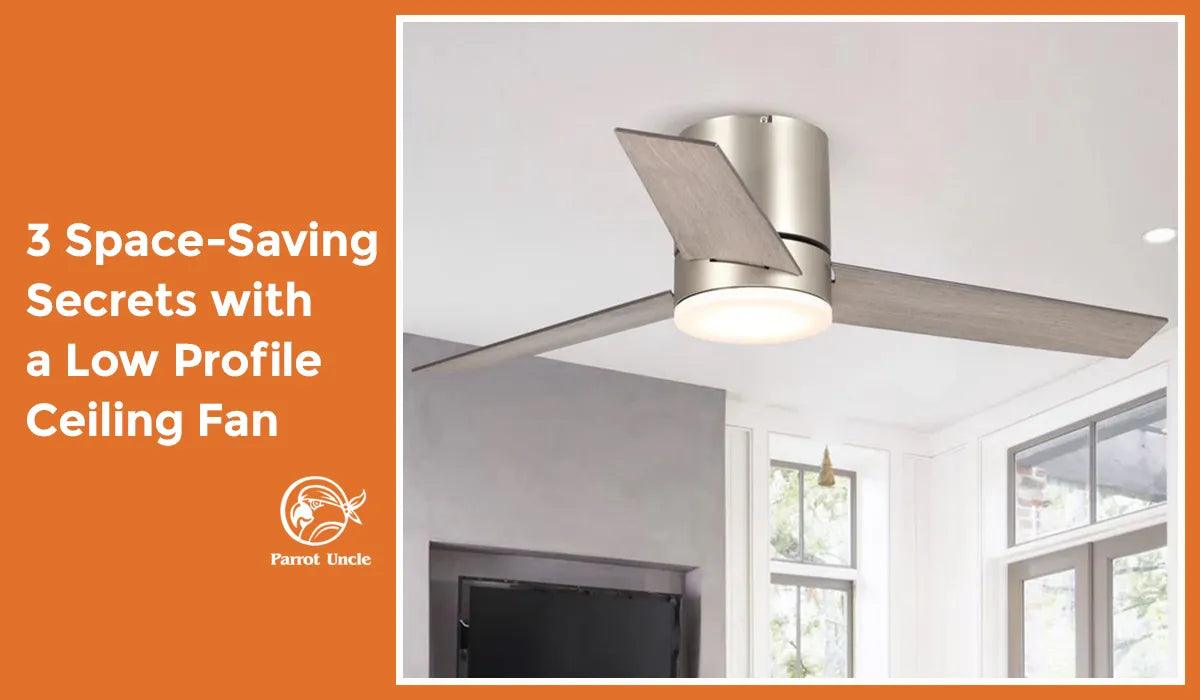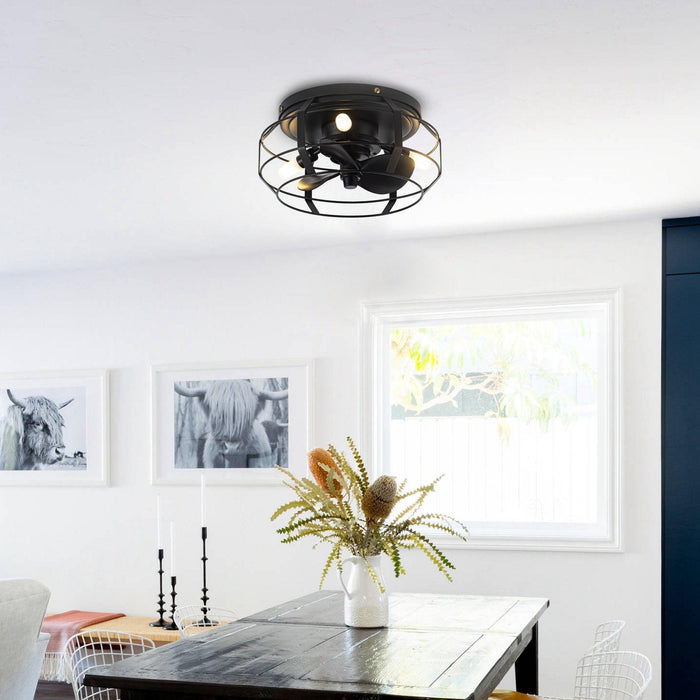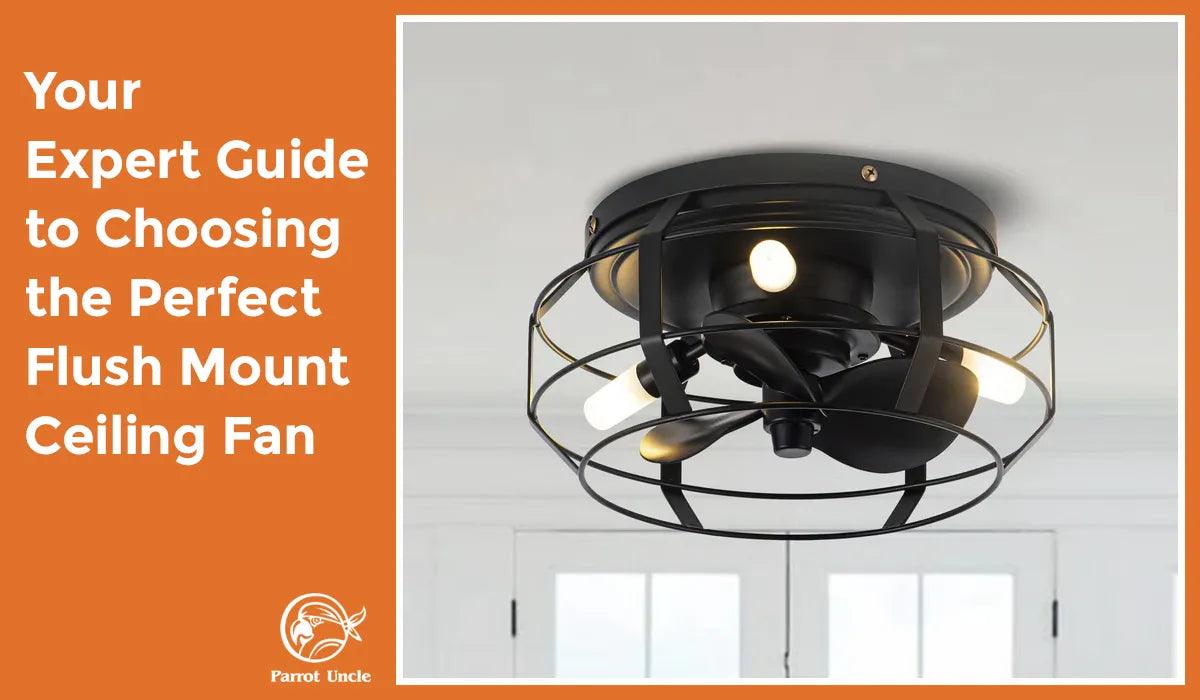This article solves three key problems for homeowners with low ceilings who want the comfort and style of a ceiling fan without sacrificing headroom. We'll explore the best fan types, installation tips, and design considerations to make your low-profile ceiling fan a success.
Low Profile Ceiling Fan: Maximizing Space and Style
Choosing a ceiling fan when you have low ceilings can feel limiting. You want airflow and maybe a light, but you also don't want to feel like you're going to hit your head. Thankfully, low profile, or "hugger" ceiling fans, are designed specifically for these situations. They mount flush to the ceiling, minimizing the distance they hang down. But selecting the right one involves more than just looking for the thinnest model.
Understanding the Core Needs: Airflow, Clearance, and Aesthetics
The perfect low profile ceiling fan isn't just about saving space; it's about optimizing comfort and seamlessly blending with your décor. People usually search for:
- Low profile ceiling fans with lights: This combines two functions in one fixture, saving space and simplifying wiring.
- Small low profile ceiling fans: Ideal for smaller rooms where a large fan would be overwhelming.
- Low profile ceiling fans with remote: For added convenience, especially in bedrooms.
- Low profile ceiling fan installation: Finding tips and instructions to do it yourself, safely.
- Best low profile ceiling fan: Seeking recommendations on the most reliable and efficient models.
Method 1: Finding the Right 'Hugger' Fan for Your Room
The primary goal is to minimize the distance from the ceiling to the bottom of the fan.
- Look for "flush mount" or "hugger" models: These are designed to sit directly against the ceiling, minimizing the drop.
- Check the specification carefully: The manufacturer will list the height from ceiling to the lowest point. Aim for 10-12 inches or less if possible.
- Consider the blade span: Match the blade span to your room size. Too large, and it will overpower the room; too small, and it won't circulate air effectively.
Method 2: Installation Secrets for Low Ceilings
Proper installation is key, especially when dealing with limited headroom.
- Turn off the power: Before you even touch the existing fixture, cut the power at the breaker.
- Double-check the mounting bracket: Ensure the provided mounting bracket is suitable for your ceiling type. Reinforce it if necessary.
- Follow the manufacturer's instructions meticulously: Don't cut corners. This ensures safe and proper operation.
- Consider professional installation: If you are not comfortable with electrical work or are unsure about the structural integrity of your ceiling, hire a qualified electrician.
- Optimize Wiring: Neatly tuck wires to prevent strain and ensure everything fits securely within the housing.
Method 3: Optimizing Design and Functionality
A low profile fan can be both functional and stylish.
- Choose the right finish: Match the fan finish to your existing hardware and décor. Brushed nickel, oil-rubbed bronze, and matte black are popular choices.
- Consider integrated LED lighting: Many low profile fans come with built-in LED lights, offering energy efficiency and a sleek look.
- Think about remote control: Remote control operation adds convenience, allowing you to adjust fan speed and lighting from anywhere in the room.
- Pay attention to blade pitch: A steeper blade pitch generally moves more air, even at lower speeds.
- Keep it Simple: Select models with streamlined designs and minimal ornamentation for a clean, modern aesthetic.
My Perspective: Lessons from a Low-Ceiling Homeowner
Living in a house built in the 1920s, I'm intimately familiar with the challenges of low ceilings. I originally thought any ceiling fan was out of the question. But, after researching, I installed a low-profile fan in my bedroom, and it made a huge difference.
The biggest surprise? The difference a good light makes. Originally, I opted for a fan without a light to save space, assuming it wouldn't be noticeable. Big mistake! The room felt darker and less inviting. Replacing it with a model that had integrated LED lighting was a game-changer. It brightened the entire space without sacrificing any headroom. Also, the remote control ended up being more useful than I initially imagined.
Unique Insights: Beyond the Obvious
Most articles focus on the dimensions and installation process. But here's something you won't find everywhere: Consider the color of the ceiling fan blades. Dark blades against a light ceiling can visually lower the ceiling even further. Opting for blades that are close in color to the ceiling helps the fan blend in and makes the room feel taller.
Furthermore, think about the direction of the fan blades in relation to your furniture layout. Make sure the airflow is directed where you need it most – over the bed, towards the seating area, etc. Slight adjustments to furniture placement can dramatically improve the fan's effectiveness.
One more thing I learned the hard way: Don't underestimate the importance of a quiet motor. Cheaper fans often have noisy motors that can be distracting, especially in a bedroom. Invest in a quality fan with a DC motor for whisper-quiet operation.
The Importance of Expertise and Reliable Sources
I've been working with home renovation and DIY projects for over 15 years, and through trial and error, I've learned a lot about what works and what doesn't. My recommendations are based on both personal experience and thorough research of available products and best practices.
While I can't provide direct links to specific products (as those change frequently), you can find helpful information on ceiling fan technology and installation guidelines from reputable sources like:
- Wikipedia: Offers a good overview of ceiling fan history and types: https://en.wikipedia.org/wiki/Ceiling_fan
- Energy Star: Provides information on energy-efficient ceiling fans: https://www.energystar.gov/ (Search for ceiling fans)
It's also wise to consult online reviews and compare models from different manufacturers before making a purchase. Always prioritize safety and follow local electrical codes when installing any electrical fixture.
Table: Common Low Profile Ceiling Fan Sizes & Room Recommendations
| Blade Span (inches) | Room Size (square feet) | Typical Applications |
|---|---|---|
| 30-42 | Up to 100 | Small bedrooms, offices, hallways |
| 44-52 | 100-400 | Bedrooms, living rooms, kitchens |
| 54-60 | 400+ | Large living rooms, open spaces |
FAQ: Low Profile Ceiling Fans
-
What is a low profile ceiling fan?
A low profile ceiling fan, also known as a flush-mount or hugger fan, is designed to be installed close to the ceiling, making it ideal for rooms with low ceilings. -
How is a low profile ceiling fan different from a regular ceiling fan?
Unlike regular ceiling fans that hang down with a downrod, low profile fans are mounted directly against the ceiling, reducing the distance between the fan and the ceiling. -
What are the benefits of using a low profile ceiling fan?
They are perfect for rooms with low ceilings, provide better airflow in smaller spaces, and are safer in areas with limited headroom. -
How do I install a low profile ceiling fan?
Installation typically involves securing the fan directly to the ceiling's electrical box without a downrod. Always follow the manufacturer's instructions and consider hiring a professional if unsure.

